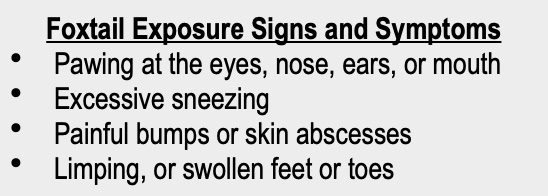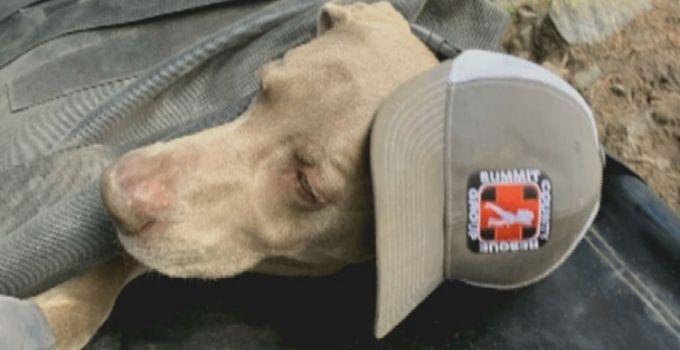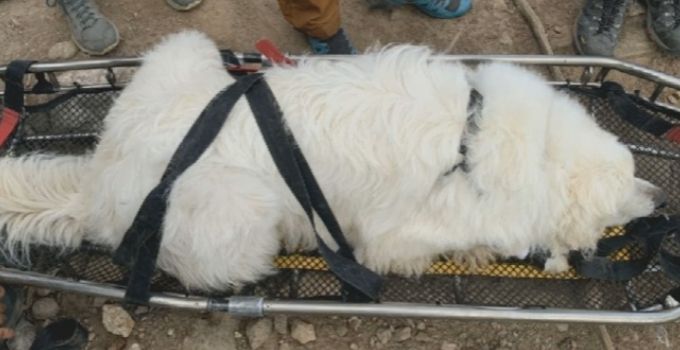
…skilled service…compassionate care
GRAIN FREE DIETS: Concerns
Several years ago, we wrote about health concerns in dogs fed grain-free diets, and recently, our friends at U.C. Davis School of Veterinary Medicine reached out to update that information. They identified that there had been an association between grain-free and boutique diets and nutritionally-mediated dilated cardiomyopathy or D.C.M., a common type of canine heart disease. Symptoms of this disease include fatigue, difficulty breathing, coughing, and fainting. Some dogs can abruptly go into heart failure. Generally, D.C.M. is typically seen in large breed dogs with a genetic predisposition for it; it has also been seen frequently in golden retrievers, doodle mixes, Labrador Retrievers, and Shih Tzus. The common factor was a diet heavy in peas, lentils, chickpeas, and potatoes – carbohydrates intended to replace grains.
If your veterinarian has not prescribed a specialized diet for your dog, you should discuss your pet’s nutritional needs with your doctor before beginning such a diet. U.C. Davis recommends feeding a diet that meets AAFCO standards based on feeding trials – different from “formulated to meet AAFCO”). Ideally, specifics for your healthy dog’s diet can be reviewed with a veterinary nutritionist to be sure the diet you feed is balanced and healthy for your pet’s heart. For more information, please visit the following websites:
SUMMER DANGERS FACING YOUR PET
It seems like forever since we felt safe escaping the house and taking long leisurely walks with our dogs. Pay attention to the dangers facing your dogs, such as foxtails, ticks, dehydration, heat exhaustion, and others. Learn the signs, symptoms, and first aid to support your dog and/or get him help when needed.
 Foxtails – a grassy plant with seed heads containing sticky barbs resembling “foxtails”, that don’t let go when they are stuck. These seed heads have barbs that help them travel into ears, paws, eyes, toes, genital areas, and the coat. Your pet can also sniff them up the nose too. They are found along paths, sidewalks, on trails or fields. After your dog goes for a run, walk, or stroll, check him carefully and remove the foxtails immediately so your dog’s movements do not permit the foxtail to enter the body, cause pain, severe damage to organs, and even death. If you are concerned that your dog has had contact with foxtails, please call us immediately.
Foxtails – a grassy plant with seed heads containing sticky barbs resembling “foxtails”, that don’t let go when they are stuck. These seed heads have barbs that help them travel into ears, paws, eyes, toes, genital areas, and the coat. Your pet can also sniff them up the nose too. They are found along paths, sidewalks, on trails or fields. After your dog goes for a run, walk, or stroll, check him carefully and remove the foxtails immediately so your dog’s movements do not permit the foxtail to enter the body, cause pain, severe damage to organs, and even death. If you are concerned that your dog has had contact with foxtails, please call us immediately.
For more information about foxtails in California, go to: The Many Faces of Foxtails.
Ticks – Ticks are blood sucking arachnids that can be found almost anywhere outside. When an animal or human brushes against foliage, the tick is picked up. It wanders around the body usually within one day, but up to two to three days, and when it finds the right spot, hairline, arm pit, genitalia, then it latches on and begins to feed on a blood meal. After eating, it simply releases and falls off.
Because ticks are known to carry diseases such as Lyme disease, Rocky Mountain Spotted Fever, Tularemia, and others, they can present a danger to your pet as well as to humans. Ticks that carry these diseases can be found in California. For more information about Lyme disease, go to: CDC – Lyme Disease
 Dehydration – dehydration occurs when the body uses more fluid than it takes in, thereby endangering vital organs and bodily functions. The American Kennel Club (AKC) shared the symptoms of canine dehydration.
Dehydration – dehydration occurs when the body uses more fluid than it takes in, thereby endangering vital organs and bodily functions. The American Kennel Club (AKC) shared the symptoms of canine dehydration.
As a general rule, dogs require at least one ounce of water per day for each pound of body weight, but be sure to ask your veterinarian what amount is appropriate for your dog. A quick way to tell if your dog is well-hydrated is to gently pull up on your dog’s skin between the shoulder blades. A well-hydrated dog’s skin will quickly fall back into place when released. If the skin is slow to recover, your pet may be dehydrated and in need of fluids. Also, check your pet’s gums. Press firmly on the gum and release. Where you pressed it, the gum will appear white but should return quickly to a healthy pink. If it is slow to refill (>2 secs) or the gums appear pale, your pet may require fluids. Please call our office if you have concerns. If your pet appears to be severe, please call us or go to the nearest veterinary emergency hospital.
Hiking With Dogs
If you plan to camp or hike in the wilderness and want to have your dog join you, be sure that your pet can handle the rigors of the hike. Your dog does not plan and pack drinking water, or food, foot protection, or a rescue sling for emergencies, but you should. If your dog is not in a condition to take strenuous hikes, don’t jeopardize her health. She may not seem old to you, but age, stamina, and condition are vital for both people and dogs.
Recently, our friends at Summit County Rescue Group in Colorado reported two back-to-back incidents to help carry out first the Great Pyrenees and next to a Weimaraner, who collapsed from exhaustion while on a hike. (pictures provided by Summit County Rescue Group). The dogs couldn’t go any further. They also had torn paws and pads, which were very painful. Those dogs just followed their humans on the hike, and it was up to their humans to get them out.
Recently, our friends at Summit County Rescue Group in Colorado reported two back-to-back incidents to help carry out first the Great Pyrenees and next to a Weimaraner, who collapsed from exhaustion while on a hike. (pictures provided by Summit County Rescue Group). The dogs couldn’t go any further. They also had torn paws and pads, which were very painful. Those dogs just followed their humans on the hike, and it was up to their humans to get them out.


While there are outstanding search and rescue groups located around the country, be aware that groups who come to your aid are generally volunteers whose mission is to rescue people, not pets. Despite great planning, accidents can happen, and you may need the services of a wilderness SAR rescue team. No SAR team in Colorado charges for their services, but depending on your location, you may be charged for some or all of the SAR services you receive, and they can be expensive. Please do your best to be as prepared as possible so you will only call them when needed.
Estimated Vehicle Interior Air Temperature v. Elapsed Time

Courtesy Jan Null, CCM: Department of Geosciences, San Francisco State Univ.
Another heat risk to dogs is running on hot asphalt. Did you know that when the air temperature is 87 degrees F, the asphalt can reach 140 degrees F? That’s hot enough to fry an egg. It can cause burns and permanent damage after just one minute of contact. Hot sidewalks can also reflect onto dogs’ bodies, increasing the risk of heatstroke. If possible, walk in the early morning or evening. The American Kennel Club has more detailed summer safety tips for your pet. Please visit: https://www.akc.org/public-education/resources/general-tips-information/summer.
We utilize therapeutic laser treatments as a pain management tool, among other things. Laser treatments for pets involve several minutes of deep-penetrating light to reduce pain and stimulate injured cells to heal at a faster pace. The treatments are non-invasive, pain-free, drug-free, and are performed by trained staff while your pet relaxes on a comfortable cushion. If your pet has an injury, arthritis, ear infections, dental pain, or inflammation, discuss with our doctors and staff if laser therapy might be helpful to reduce your pet’s pain or swelling and enhance the quality of life.
COVID-19 – Re-opening update – Thank you for your cooperation as we all navigated the challenges of masks, social distancing, and service interruptions. El Gato is developing a protocol that will permit us to have clients return to the hospital and keep you and our staff safe. We are as anxious as you are to return to normal yet we are focused on safety. Currently, you may be invited inside if your pet is scheduled to be dropped for a procedure or if you are picking up your pet. Of course, if you feel better continuing with curbside service, we’ll gladly oblige.
Farewell Dr. Sarah – as Geoffrey Chaucer said, “all good things must come to an end”. Dr. Sarah moved back to Idaho to care for family and manage her farm. She promised to come back to visit, but we’ll certainly miss her. Thank you for the time you shared with us.
Farewell to Megan – we also bid farewell to Megan Trujillo, one of our great technicians. She moved on to be closer to family and expand her own business opportunities. We wish you well in all you do.
ROO’S NEWS! by the assistant editor, Roo, aka, Super Searcher, With a Nose for News.
Fake Rabies Records!
As if dealing with the consequences of COVID-19 wasn’t enough, the Centers for Disease Control is now battling a new problem; the importation of dogs with fake rabies vaccination certificates into the United States from countries at high risk for rabies. The concern is that while the canine rabies virus variant (CRVV) was declared to be eliminated in dogs in the United States in 2007, imported animals may re-introduce the canine rabies virus variant (CRVV) into the United States. Research shows that some fake rabies vaccination certificates have been issued in other countries, and that can put dogs at risk, which in turn can raise the potential for humans and other animals being infected with the virus.
To mitigate the rabies problem, especially in raccoons and other wildlife in the United States, beginning July 14, 2021, the United States has issued a temporary suspension for dogs imported from countries that CDC considers high risk for dog rabies. To read the full information, go to https://www.cdc.gov/importation/bringing-an-animal-into-the-united-states/high-risk-dog-ban-frn.html. or,
https://www.cdc.gov/importation/bringing-an-animal-into-the-united-states/operation-dog-catcher.html. If you wish to bring a dog from a high-risk country into the United States, email CDCanimalimports@cdc.gov at least 30 business days (6weeks) before you intend to enter the United States.
FUN OR INTERESTING DATES IN JULY AND AUGUST
July was National Dog House Repair Month – Many of us do not live outdoors in a traditional dog house, but some of us have outdoor shelters we use to take a break. Remind your human to check your shelter, make repairs as necessary and be sure it is appropriately sized and placed for you. If there is bedding in it, clean it or change it. Always be sure there is sufficiently clean, fresh water available, and then curl up and have a great snooze.
U.S. Independence Day – July 4 – This year we celebrated all of the great things about the good old USA. Hopefully, your pet was with you and was not frightened by any fireworks. Before the next fireworks, even such as New Year or any time, be sure your pet has identification on her collar, is microchipped, and that you have a great photo showing your pet as well as a photo with you and your pet together. Then, sit back, and enjoy your togetherness.
Work Like a Dog Day – August 5 – I know many great dogs who work at amazing jobs to help the world in many ways, I am thinking in particular of the great staff at El Gato who work super hard every day to be sure your pets get the best care possible. We should thank them everyday for their hard work and caring. Believe me, I watch them very carefully.
Left Handers Day – August 13 – Among my k-9 friends, we call it being a “southpaw”! But, according to www.lefthandersday.com, about 13% of people worldwide are left-handed, and it is thought to be genetic. Given that the right hemisphere of the brain controls left-handedness as well as music, art, creativity, among others, this is thought to be the holistic thinking mode. It doesn’t matter to me which hand doles out the pets’ treats, just as long as I get them. Go have fun!

